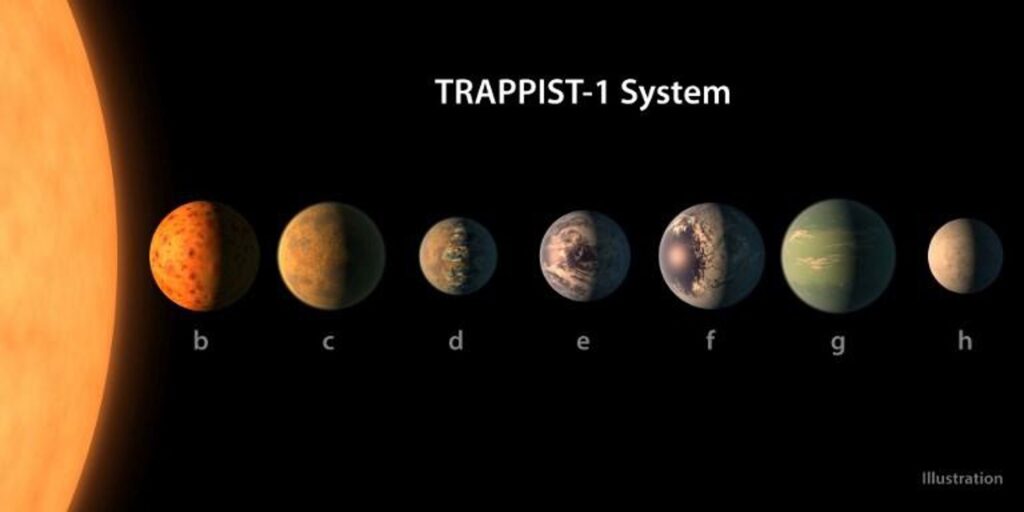The world's largest, most powerful space telescope, the James Webb, has managed to measure the temperature of a rocky planet 40 light years away from the Earth’s solar system for the first time, according to a study published on Monday in Nature magazine.
Discovered in 2017, the Trappist-1 system has seven planets orbiting a small “cool” star, a red dwarf half as hot as the Sun.
This planetary system is a prime target for the Nasa-developed James Webb Space Telescope (JWST), which has been in operation since July 2022. One of the JWST’s missions is to probe the atmospheres of potentially habitable exoplanets - planets that orbit stars outside the solar system.
Planet of similar size and mass to Earth
Trappist-1 is an “excellent laboratory” for this quest, Nasa said in a statement. It is close to the solar system and contains only rocky planets, all of similar size and mass to Earth.
However, it is difficult to know their characteristics because exoplanets cannot be observed directly at such a great distance, unlike the stars around which they orbit. To detect them, astronomers use the transit method, which captures changes in brightness caused by the planet passing in front of its host star, such as a micro-eclipse.
The JWST’s Mirim imager, which is capable of observing in mid-infrared, was able to capture a so-called secondary eclipse, when the planet passes behind its star. In this case the planet observed was Trappist -1b, the one closest to the Trappist-1 star and therefore the easiest to study because its transits are more numerous.
“It is just before disappearing behind the star that the planet adds the most light (to that of the star) because it almost exclusively shows its ‘daylight’ side,” Elsa Ducrot, an astrophysicist at the French Atomic Energy Commission (CEA) and co-author of the study, told French news agency AFP.
First ever measurement of the temperature of a rocky exoplanet
By comparing the amount of light detected before and during the eclipse, the scientists deduce how much of it was emitted by the planet.
The temperature measurement of Trappist-1-b is a first for a rocky exoplanet. It is about 230 degrees Celsius on the day side, suggesting “that there is no redistribution of heat over the whole planet, a role played by an atmosphere,” says the CEA, which designed the Mirim imager.
Conclusion: Trappist-1b “has no, or very little, atmosphere,” said Elsa Ducrot, stressing, however, that it will be necessary to search at other wavelengths to come to a final conclusion.

